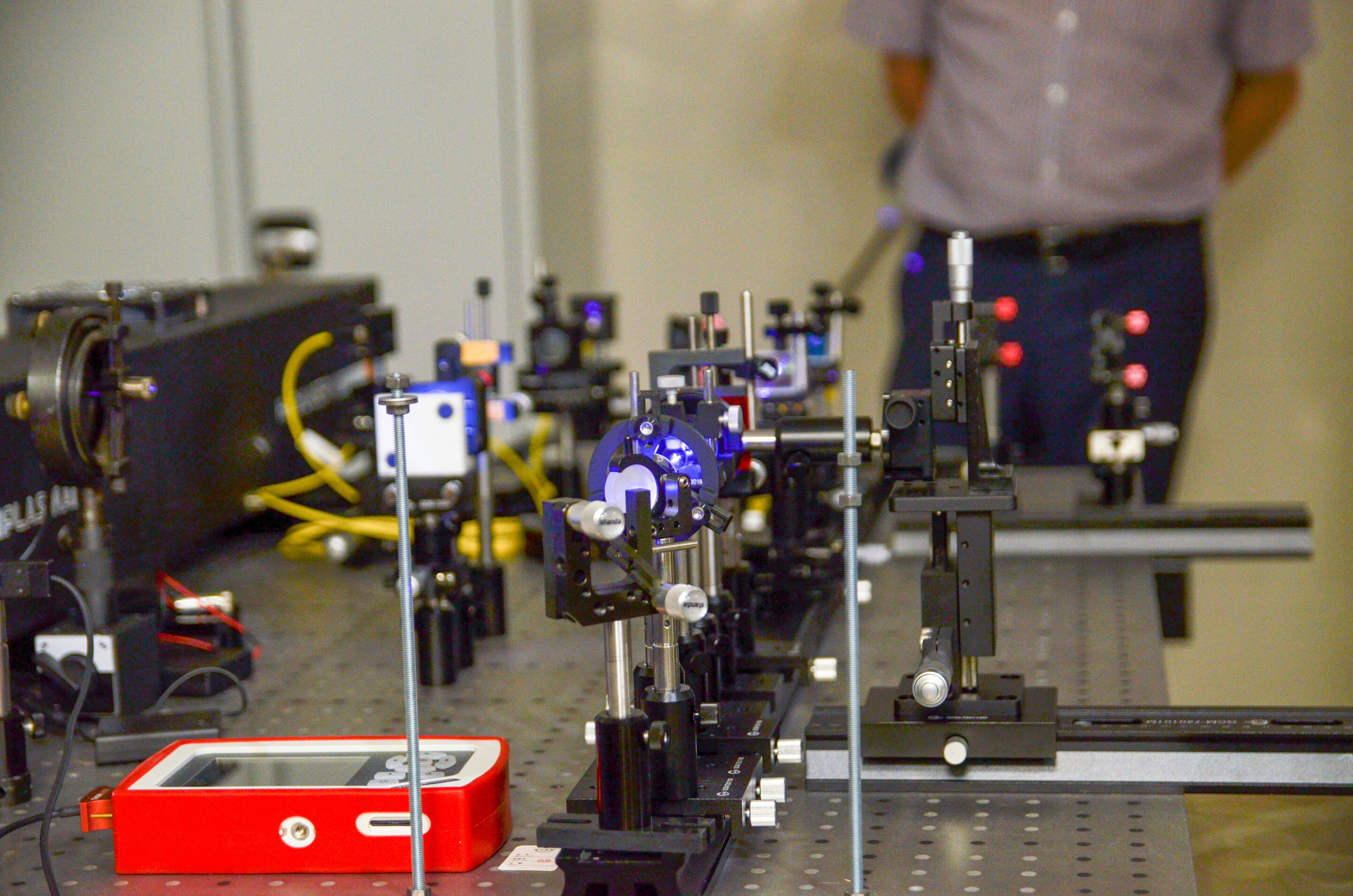#Efficient production of large-size optical Schrödinger’s cat states

“#Efficient production of large-size optical Schrödinger’s cat states”

A team of young scientists from the Institute of Natural Sciences and Mathematics of South Ural State University, under the guidance of physicist and mathematician Professor Sergei Podoshvedov, have proposed an algorithmic generator of the nonclassical state of light representing a “Schrödinger’s cat state” of a very large amplitude. This algorithm plays an important role in quantum coupling and quantum computations in the optical field with the use of laser sources. The results of this work have been published in Scientific Reports.
Is the cat dead or alive?
The researchers have been actively studying various fields of quantum mechanics. One of these included the idea of generating nonclassical states of light. The researchers have considered what conditions must be created in order to work with quantum information transmission and determined the possibility of creating such conditions in reality. This task is of interest both from the fundamental point of view (i.e., whether it is at all possible), and from the applied one, since light signals are capable of transmitting quantum information using entangled particles. The SUSU scientists have proposed an algorithm to create a state of light in which photons are in a Schrödinger’s cat state.
In 1935, Austrian physicist Erwin Schrödinger, one of the first investigators of quantum mechanics, proposed a famous thought experiment involving a cat penned up in a chamber. Its life depends on the decay of a radioactive atom; if the atom decays, a relay activates and releases a hammer that shatters a flask of poison, and the cat is poisoned; if the atom does not decay, the cat remains alive. Once the chamber is opened, the observer can witness only one of two states: The nucleus decayed, and the cat is dead, or the nucleus did not decay, and the cat is alive. Before it happens, the hypothetical cat is both dead and alive.
Schrödinger’s illustration describes the main paradox of quantum physics: Particles, such as electrons, photons and even atoms, can exist in two states at the same time. The creation of optical elements with the use of elementary particles for quantum computers is a promising direction. Most likely, however, a quantum computer will be engineered based on several physical systems, including the use of optical qubits.
In quantum computations, the Schrödinger’s cat state is a special entangled (coupled) state of qubits, in which they all are in an equal superposition of all zeros and ones.
“Qubits can be affected by the surrounding environment and, therefore, require reliable computing systems. All of that places very exacting demands on any physical system based on qubits, as well as the quantum gates that transform the input states of qubits into output states. Different physical systems can be used for different quantum protocols. In particular, since light has the maximum possible propagation velocity and weakly interacts with the surrounding noisy environment, optical systems are placed alongside atomic systems when developing the possible configurations of a quantum computer,” explains Dmitrii Kuts.
The superposition condition makes quantum computers incredibly powerful. But it significantly complicates the computations. Qubits must not simply maintain their state; they must also interact with each other. And the situation becomes more complicated when considering the interaction between dozens or hundreds of qubits.
New steps towards reaching the goal
The scientists intend to conduct experiments to create a determinate source of entangled light independent of the initial conditions. On-demand creation of a source of entanglement is a crucial element for practical implementation of all quantum protocols, including the creation of a quantum computer. The promise of quantum computing is efficiently implementing intractable algorithms to perform such functions as quickly choosing the right solution out of millions of options, or searching for unsorted data, which cannot be performed efficiently by computers operating on classical laws. But to realize a working quantum computer, a multi-purpose set of determinate operations with a large set of qubits must be efficiently performed. The diversity of the possible states of a qubit significantly increases its capacity, and therefore, the potential computational power of a computer.
“As a rule, researchers conduction experiments can implement only a very limited number of useful states in practice. An on-demand implementation of a desired quantum state is the key to the operation of quantum states and a large number of various quantum protocols. In essence, a quantum computer is itself a generator of the required output state, the information from which is extracted by means of measurement. The same may also be said of, for instance, a protocol of quantum teleportation of an unknown state, or, let’s say, of a quantum internet. Any progression, be it a new mechanism or a new algorithm in quantum engineering, brings mankind closer to realizing an efficient quantum computer and making an attempt to peek beyond the bounds of the physical world,” says Sergei Podoshvedov.
Though multiple approaches to optical quantum computers have been proposed, none is completely satisfactory; existing proposals are quite complicated or are limited in application. For instance, the implementation of a simple logic operation would require an unacceptably large number of additional operations. So efficiently using the optical resources, interaction mechanisms and suitable states is still an open question. Quantum engineering of states remain an unsolved problem of the quantum processing of information.
The Schrödinger’s cat state could allow researchers to reduce losses during the quantum processing of information, and can be created in any environment with large amplitudes. Nevertheless, a number of problems arise when working with them. For example, these states must be stable, and quantum operations must be performed very quickly. Scientists around the world are working on solving these tasks.
Verifying the output from a quantum computer by comparing it to the output of another quantum computer
Evgeny V. Mikheev et al. Efficient production of large-size optical Schrödinger cat states, Scientific Reports (2019). DOI: 10.1038/s41598-019-50703-1
Citation:
Efficient production of large-size optical Schrödinger’s cat states (2020, November 12)
retrieved 12 November 2020
from https://phys.org/news/2020-11-efficient-production-large-size-optical-schrdinger.html
This document is subject to copyright. Apart from any fair dealing for the purpose of private study or research, no
part may be reproduced without the written permission. The content is provided for information purposes only.
For forums sites go to Forum.BuradaBiliyorum.Com
If you want to read more Like this articles, you can visit our Science category.



